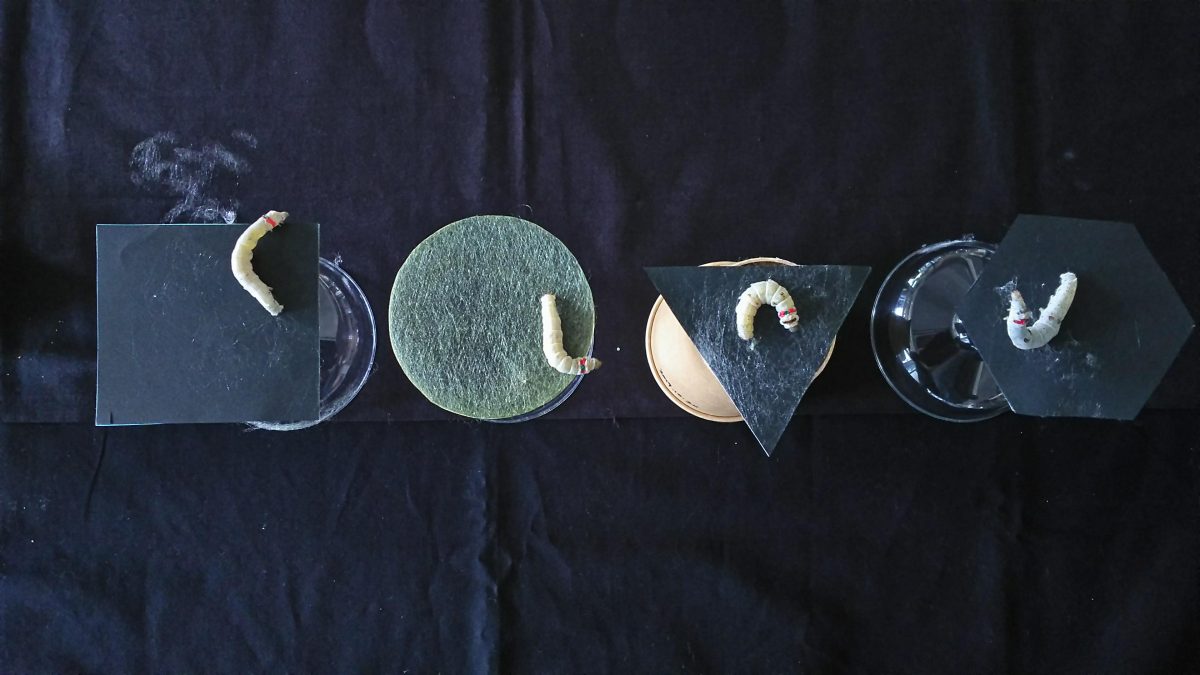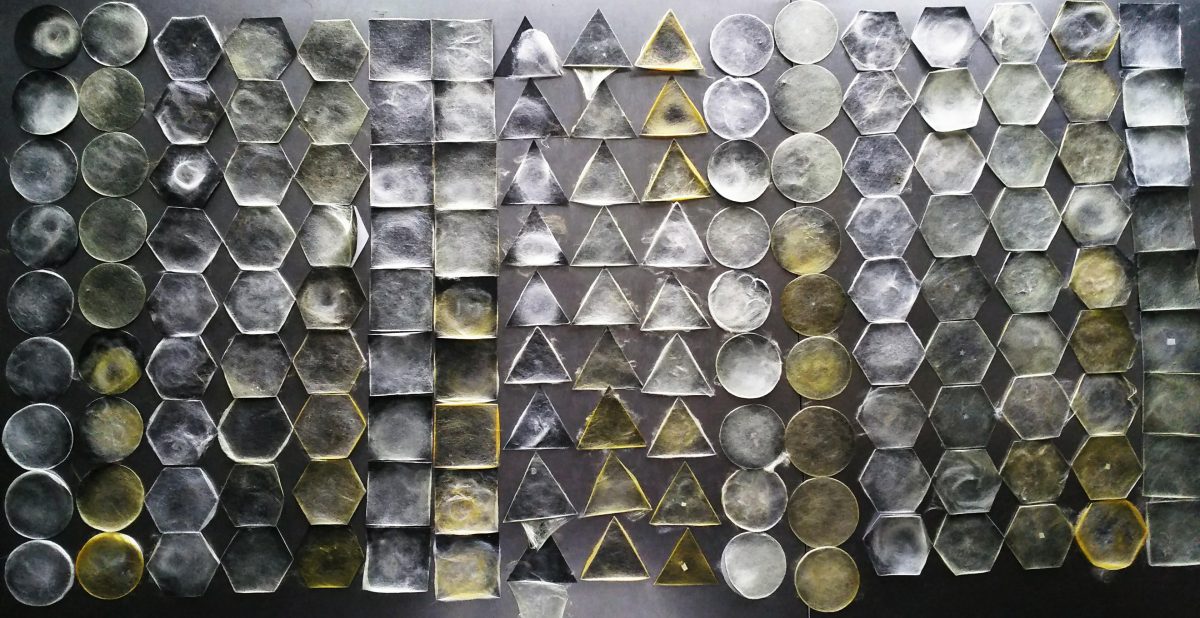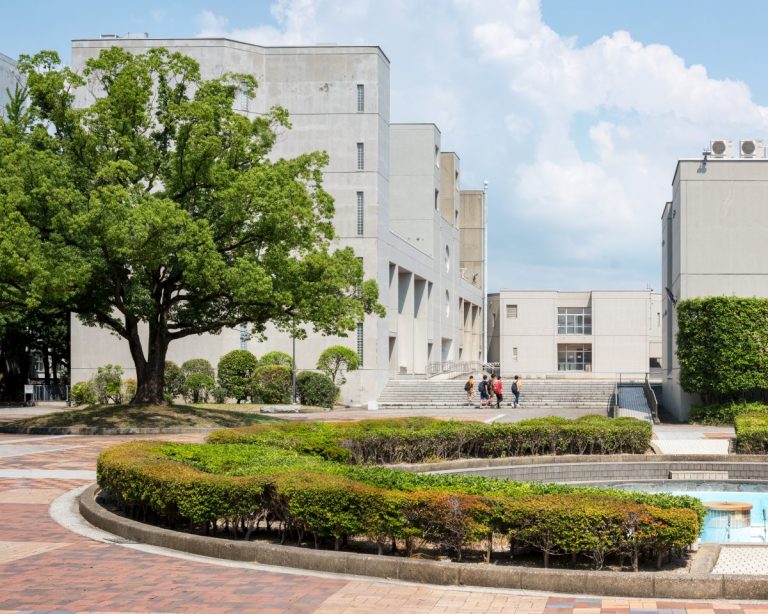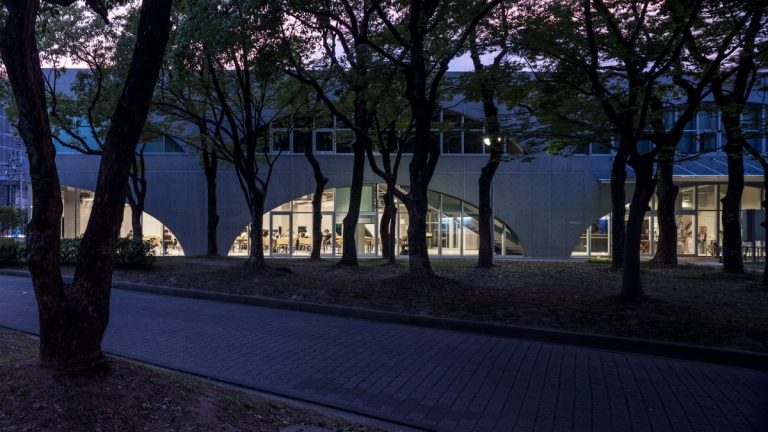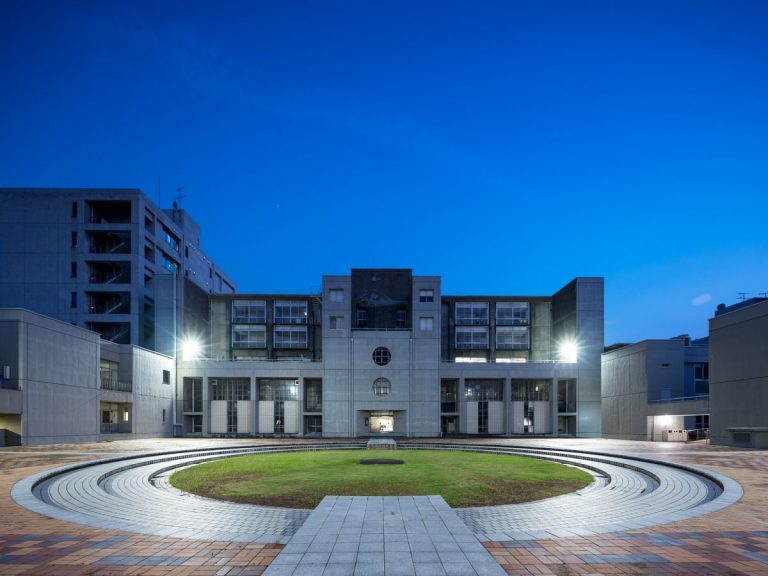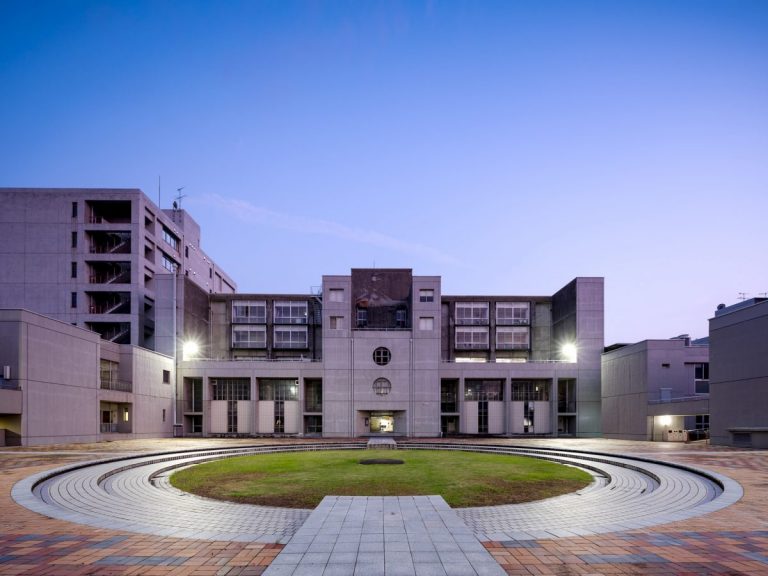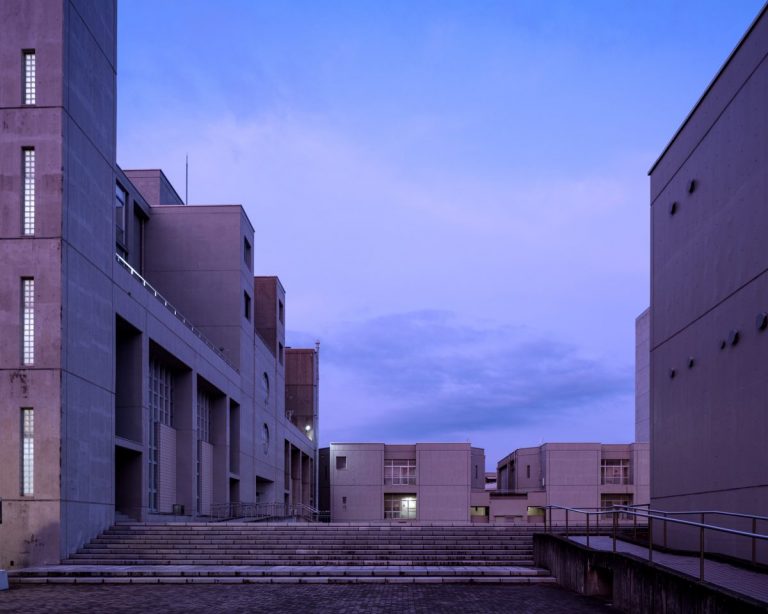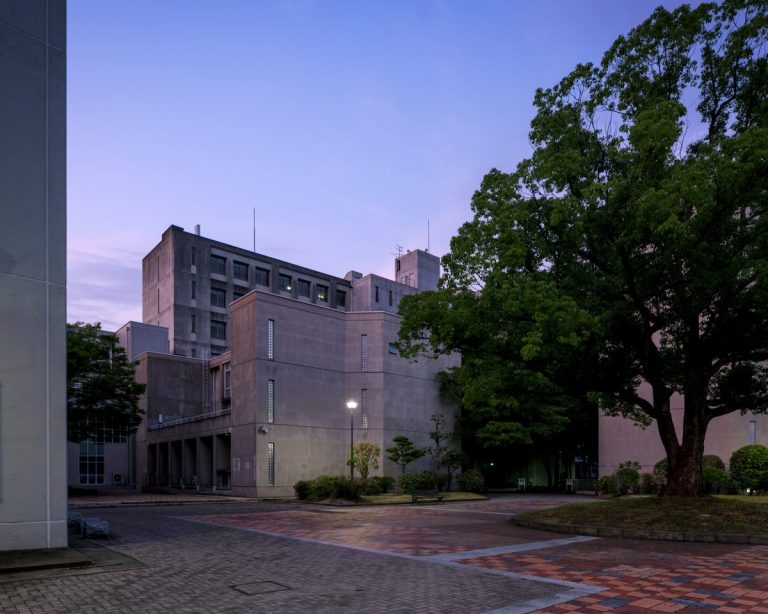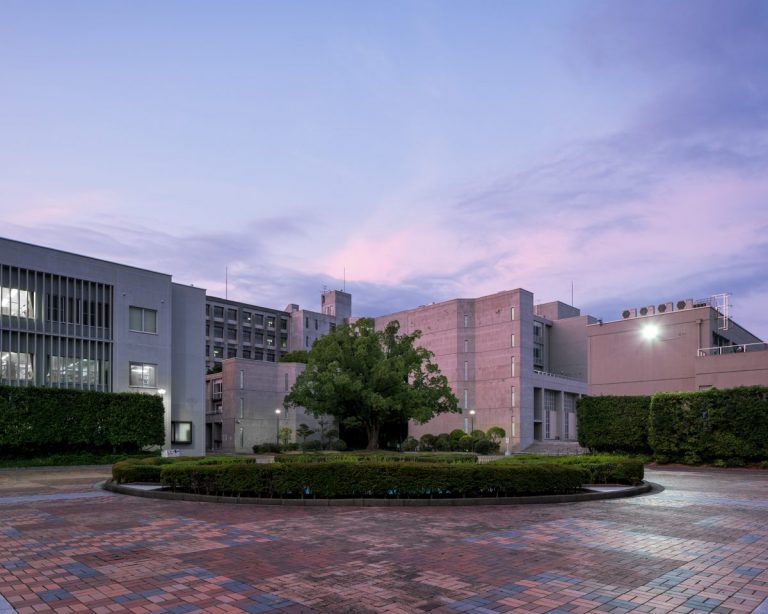A co-working system for silkworms, ants, and people -Material design from symbiosis between technology and animals
June, 2020
Biolab of theFaculty of Design at Kyushu University was launched in 2019 and is currently engaged in joint research with various researchers from within and beyond the university. Our wide-ranging research adopts multiple perspectives on the relationship between intelligence and life, including bio-aesthetics, artificial intelligence, bio-art, synthetic life, and DIY bio, as part of our efforts to “develop the pedagogy for next-generational design education (creative education).”
Ms. Terumi Ikenaga, a PhD student from the Graduate School of Agriculture at Kyushu University, is currently conducting experiments at Biolab involving threads that silkworms spew out. This experiment explores the design-related possibilities of silkworm byproducts such as their threads and membranes as well as their unique material-shaping process.
Below are links to the experiments so far:
Silkworm flat-spinning experiment
Designing a composite material made from nanocellulose×silk filaments
Biolab Silkworm Nonwoven Fabric
While the world has created many beautiful design products, this has unfortunately resulted in the balance of the earth’s natural environment beginning to collapse, with co-creation pursued to such a point that the environmental effects cannot be recovered from. Human-induced environmental effects such as climate change, resource depletion, and extinction of wildlife pose a danger to the balance of the natural world and its ecosystem, while also further increasing threats to our own lives in the form of natural disasters and epidemics. Considering these dangers, we wonder if devising a new kind of design, one that targets not just humans but also the nature, wildlife, and environment which are along with us, might be able to solve these problems and deliver a more appealing way of life.
The natural world and the wildlife maintain its ecosystem according to sensible, natural methods that don’t place a burden on the environment; a cycle of life and death with no need for conflict, wielding power, or hatred towards others. Before the birth of humanity until the present day, considering that so many species have existed, the nature and wildlife know how to get an adaptability for living in harmony with the surrounding environment and other forms of life. We believe that, by learning from the animal world, we can devise a balanced, natural, sensible form of design.
In addition, in this modern age of an environment in which anyone can wield technology, and in which people act on technology and are acted upon it in turn, it may be ideal that we consider the impact of those interactions, react to them, and think about the how we will build the relationship from here on out. Technology may move in a lifelike manner, but it does not breathe, does not flow with blood, and does not have regenerative systems of periodic rhythms and cycles. Nature and living things have power of creation within them, but we believe that technology gives rise to a power of creation through a peripheral approach. We further think that design which learns approaches from nature and living things, and coexists, cooperates, and collaborates with technology, will provide ideas for resolving problems.
—Fashion material design taking cues from silkworms and weaver ants
It has been proposed that the present day, in which the effects of human life on the planet itself are significant, constitutes a new geological era, called the Anthropocene. A report from the United Nations on May 2019 stated that “Over 75% of the Earth’s land, and over 66% of its water, has had its form significantly changed by humanity.”
People-oriented fashion has participated significantly in the Anthropocene problem. Counteracting this problem associated with fashion likely requires not just utilizing sustainable, low-environmental-impact clothing materials and manufacturing processes, but designing an interactive environment that takes into account the way we live in our clothes, how they are disposed of, and the way our very understanding of and values regarding fashion influence our actions. In order to find a clue to this, we want to expand fashion’s targets to include the natural and animal worlds and the Earth’s environment, and make an effort to design fashion together with animals and technology.
The silkworm, which doesn’t exist in the natural world, has lived with humans ever since its domestication approximately 5000 years ago. Crossing the silk road, they have been making silk incorporating the traits of different regions, the tastes of different eras and people, and technologies up to the present day. Their spinning ability is incredible, producing silk filaments of around 1000m in length; the longest of all natural fibers.
The ant, born approximately 150,000,000 years ago, long before humans, has not only survived one extinction-level event, but is so widespread that the total weight of all ants on earth rivals that of all humans. Known as social insects, the inter-group communication and incredible colony construction technology of ants allows them to live stably amidst the surrounding environment. The weaver ant lives on trees, bending leaves to create its colonies. Holding their own larvae in their mouth, the ants use the silk produced by their larvae to weave leaves together.
This project is an attempt to have weaver ants sew together nonwoven fabrics made of silk spun by silkworms, creating a 100% silk material made entirely by animals. We aim to find what kind of relationships are woven together when we connect with and learn from these animals, and when people and technology cooperate and collaborate together.
—Silkworm planar spinning patterning
Previously, when producing circular or near-circular hexagonal nonwoven silk fabrics using silkworm planar spinning, there has been a tendency to evenly spin along the shape. (Previous experiment). This time, together with sewing of nonwoven fabrics using weaver ants, we investigated other spinning behavior patterns, adding square and equilateral triangle shapes, for the purpose of spinning behavior patterning and algorithmic analysis.
We found that silkworm spun the silk to the corners of the polygonal base. How precisely silkworms spin silk along the corner of the base depended on the number of vertices of the base. An equilateral triangle is the most difficult pattern to spin silk. The silkworms spin silk with more precision as increasing the number of vertices, then, a circle is the easiest shape. In addition, we found that the silkworms are likely to spin silk along the border of the bases regardless of their shape.
 This result suggests that silkworms recognize the borders of the shape and practice spinning behavior according to its angles. In future, we are going to further investigate the relationship between the spinning pattern and the vertex of the base.
This result suggests that silkworms recognize the borders of the shape and practice spinning behavior according to its angles. In future, we are going to further investigate the relationship between the spinning pattern and the vertex of the base.
Furthermore, when an empty space was created within the shape, tightly spun, thick fibers and a network of fibers connecting those thick fibers were found within the space.
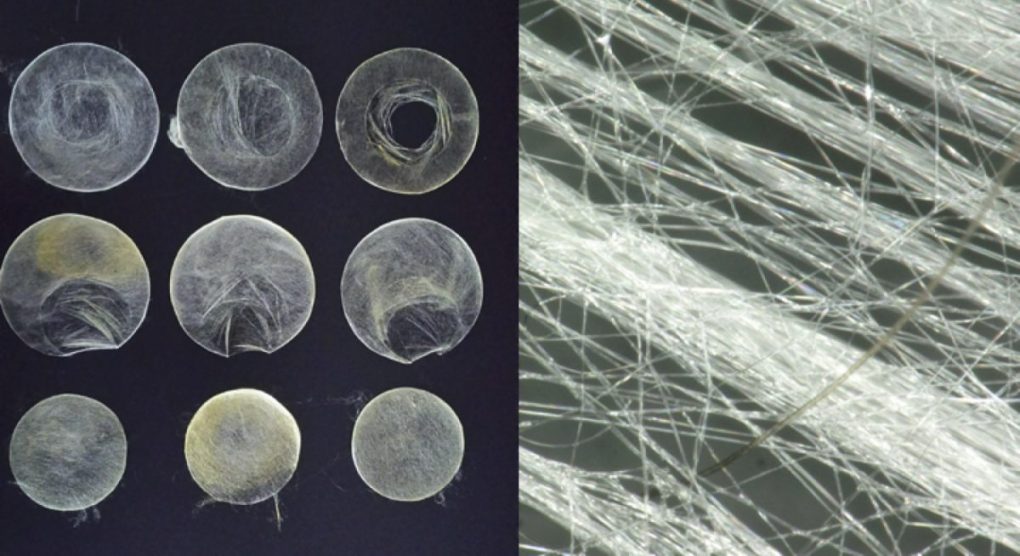 It suggests that silkworms organize fibers into different type of network architecture in order to reinforce scaffold at empty spaces, although further study is required. This patterning resembles the fibrous composition of a cytoskeleton in living cells cultured on a micropatterning surface with empty spaces. We are going to explore the missing link in construction principle in biosystem between molecular scale cell components and large organisms.
It suggests that silkworms organize fibers into different type of network architecture in order to reinforce scaffold at empty spaces, although further study is required. This patterning resembles the fibrous composition of a cytoskeleton in living cells cultured on a micropatterning surface with empty spaces. We are going to explore the missing link in construction principle in biosystem between molecular scale cell components and large organisms.
References
Manuel Théry, Anne Pépin, Emilie Dressaire, Yong Chen,and Michel Bornens. 2006. Cell Distribution of Stress Fibres in Response to the Geometry of the Adhesive Environment. Cell Motility and the Cytoskeleton.
Manuel Théry. 2010. Micro patterning as a tool to decipher cell morphogenesis and functions. Journal of Cell Science 123 :4201-4213
Anne-Cécile Reymann, Jean-Louis Martiel, Théo Cambier, Laurent Blanchoin, Rajaa Boujemaa-Paterski and Manuel Théry. 2010. Nucleation geometry governs ordered actin networks structures. nature material October 2010 vol.9 no.10
村上貴弘 2020「アリ語で寝言を言いました」扶桑社BOOKS新書
Date
June, 2020
Venue
Biolab, Kyushu University Ohashi Campus
4-9-1 Shiobaru Minami-ku Fukuoka
![九州大学イノベーションデザインネクスト[KID NEXT]](https://www.kidnext.design.kyushu-u.ac.jp/wp-content/themes/kidnext/img/logo_header.png)

